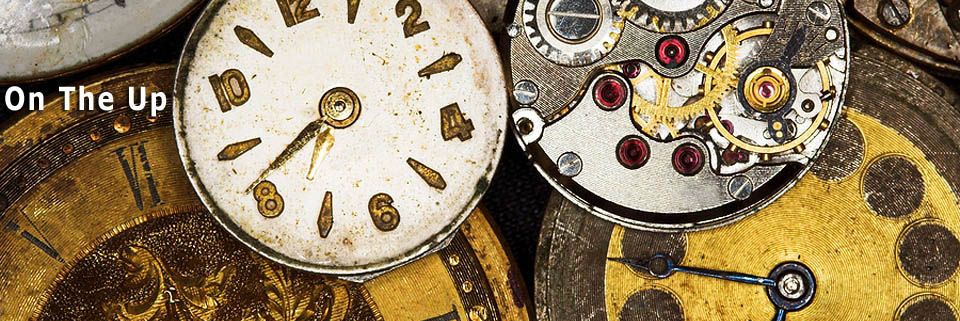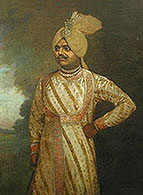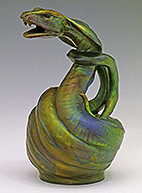





WHAT'S HOT & WHAT'S NOT
HOT: Tibetan pieces... "Good quality, well-provenanced Tibetan pieces are hard to find but the demand is incredibly strong," said UK head of Asian Art Lazarus Halstead at Chiswick Auctions. This year a standing female Avalokiteshvara from the late 18th or 19th century sold for five times its estimate to make $17,000, and a gilded copper figure inset with turquoise cabochon stones (known within the family as 'the horrible Buddha') sold at auction for $24,600 against an estimate of $6000. Last year, we reported on a 16th century gilt-bronze bodhisvatta that sold for $54,500 and in February this year, another example - this one having been bought at a car boot sale for just $40 - sold at auction for $26,400. The market for Tibetan antiques is relatively young; in the early 1990s, for example, Buddha statues could be bought for the market price of old brass or iron. To be a considered a true Tibetan antique, the item must originate in the Tibetan region of China.
HOT: Indian swagger... "I receive huge interest in anything Indian I get at the moment," said UK auctioneer Sarah Flynn in October this year. "Anything to do with the maharajahs and that sort of princely thing is good." The princes to which she was referring featured in a pair of portraits by British portrait and landscape painter A. E. Harris, which sold at Flynn's auction for $22,000. Just eight years ago, the same portraits had failed to sell at Sotheby's London. But the interest in Indian swagger - commissioned portraits of a wealthy or prominent person, which ostentatiously emphasise their importance, power or status - wasn't as great in 2008.
The maharajahs ruled from the early 18th century, when the collapse of the Mughal empire allowed smaller kingdoms and the British-formed East India Company to move in on the political landscape, to the mid-20th century when the British finally left India. The maharajahs and the members of their courts displayed their wealth and importance by wearing enormous gemstones, as well as setting them in everything from pens and pipes to game pieces and scabbards. The rani - ladies of the court - wore large, jewel-encrusted anklets and armbands and elaborate gold hair ornaments. Wooden boxes featuring a marquetry called sadeli, which mimics the appearance of inlay, are very collectable at the moment, as are the more modern Indian advertising calendars and even Bollywood movie posters.
HOT: Zsolnay ceramics... "With the Hungarians currently keen to buy back their ceramics heritage, the Art Nouveau wares from the Zsolnay factory are on something of a roll," noted the UK trade newspaper Antiques Trade Gazette on October 8. A Zsolnay serpent ewer glazed in peacock blue-green was contested by a number of online bidders and four Budapest-based phone bidders when it came up for auction at Clevedon Salerooms in the UK. Despite having a large crack across its base, it sold for a double-estimate $16,000 to one of the Budapest bidders. In June this year, a gilt and red lustre peacock charger made 11 times its top estimate when it sold for $9550 - again to a Hungarian phone bidder.
The Zsolnay factory was established in 1853, but it was at the World Exhibition of 1873, held in Vienna, where it really made its mark, receiving orders from the UK, France, Russia and the USA. At the 1878 Exhibition in Paris the Zsolnay collection was awarded the Grand Prix Gold Medal, and in 1896 the factory introduced its metallic eosin glaze. Milos Zsolnay - son of founder Vilmos - wanted to emulate in pottery the beauty of art glass, and to this end he developed a system of lustre glazes in a wide ranging colour palette, shade, iridescence and surface finish. The eosin glaze produced a shinier, iridescent surface in a rainbow of colours that propelled Zsolnay into a market so successful it lodged more than 3000 designs between 1898 and 1914.
HOT NOT: Victorian genre paintings... Genre painting describes depictions of scenes of everyday life, and in the Victorian era nothing was more popular than a sentimental household scene - often combining a storytelling element with that favourite of Victorian inclusions, a moral message. The main themes of domesticity and childhood appealed to the taste and values of an emerging and increasing more affluent middle class, and painters such as William Powell Frith, Augustus Leopold Egg and William Mulready enjoyed patronage from the Queen along with long and successful careers. But by the time of Queen Victoria's death in 1901, many of the most prominent artists had already died. Victorian attitudes and art became extremely unfashionable, and although there are exceptions, the Victorian genre painting still suffers from the stigma attached to it by art historians such as Quentin Bell, who wrote in 1967 that Victorian art was 'aesthetically and therefore historically negligible.'
This information first appeared in the Summer 2016 issue of Antiques and Collectables for Pleasure & Profit.